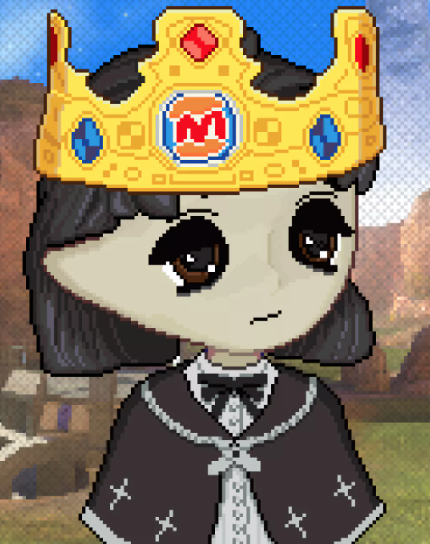Key Takeaways:
- Ordinals enable NFTs and tokenization on Bitcoin
- BRC-20s are comparable to ERC-20s
- Bitcoin purists are apprehensive of Ordinals

What are Ordinals on Bitcoin?
Remember when Bitcoin was simply a store-of-value? Well, it still is - it’s just grown up a little. Ever since Ordinals arrived on the scene, theorizing what Bitcoin may or may not be capable of is quickly becoming a thing of the past. Ordinals, and its cousin Inscriptions, have opened up a Pandora’s box on Bitcoin, unleashing innovation on the network like we’ve never seen before. NFTs on Bitcoin? Sure. Tokens on Bitcoin? Why not? Let's dive in.
A History of NFTs on Bitcoin
Believe it or not, the first appearance of NFTs on Bitcoin happened way back in 2012. “Colored Coins” were small denominations of Bitcoin (Satoshis or Sats) that were tagged as "colored", making them distinct and non-fungible. Although Colored Coins could represent many things - from property to stocks or even other currencies - the limitations of the Bitcoin protocol meant that they were somewhat restricted in functionality.
Building on the idea of NFTs and tokenization on Bitcoin, Counterparty was launched in 2014. A peer-to-peer and open source exchange built on Bitcoin, Counterparty enabled users to write smart contracts and execute them on the Bitcoin network. Some of the first iterations of Bitcoin NFTs were minted on Counterparty, including “Rare Pepe Cards” and “Spells of Genesis.” Still though, with a limit of 80 bytes of data per NFT, these were also held back by the limitations of the Bitcoin protocol at the time.
Fast forward to 2023. Thanks to the relentless Bitcoin builders, the data limit is now 4mb. Which happens to be just enough to host pretty much any type of file on Bitcoin - photo, video, audio - you name it. After years of trial and error, buckets of sweat and tears, we finally have a way to tokenize and host NFTs on Bitcoin - the Ordinals protocol!
Ordinals Explained
When Bitcoin Ordinals first went live, they swept through the crypto community faster than covid could ever dream of. In a matter of days, seemingly everyone and their mother had an NFT on Bitcoin. For the non-technically inclined user (me), it took a bit longer to digest.Imagine the Bitcoin blockchain as a long chain of blocks. Each block represents a batch of transactions, and these blocks go all the way back in time to the genesis of Bitcoin. The Ordinals protocol introduced a way to identify and organize each individual Satoshi according to its own, unique number. Now, each transaction can be likened to a book, with pages that are in order. Each Satoshi is listed in order, hence it being named the Ordinals protocol. But Ordinals were just a means to an end.
Enter Inscriptions. By inscribing data onto these unique and newly identifiable Satoshis, Bitcoin devs reinvigorated the NFT scene on Bitcoin. People could now inscribe any type of data to these Sats. Overnight, NFTs on Bitcoin flourished. By pairing each Inscription with an individual Satoshi, devs made these NFTs immutable and truly a part of the Bitcoin blockchain.
BRC20s
The fun didn’t stop there. Bitcoin developers took the innovation to the next level by introducing BRC-20s. A new way to easily create tokens on the Bitcoin network, BRC-20s are inspired by ERC-20s, but they live on Bitcoin instead of Ethereum. By attaching .JSON data to Inscriptions, Bitcoin devs are able to deploy token contracts, mint tokens, and transfer them between wallets. Behind the scenes, devs are identifying and marking specific Satoshis as ‘special’. Let's say I want to make $DOGCOIN69 on Bitcoin. What BRC-20s do is mark a bunch of Satoshis as unique, then tag them as $DOGCOIN69 (or whatever your ticker is) on Bitcoin, rather than regular Satoshis. So when you’re buying BRC-20s, you’re basically buying 0.0000001 BTC for 0.1 BTC because those Satoshis have a cute dog in the data, and regular Satoshis are just regular, boring old Satoshis.
So it’s just NFTs and Memecoins on Bitcoin?
Essentially, Ordinals have created another use-case for Bitcoin other than the transfer of value. Ask yourself - if you wanted to upload a file for everyone in the world to see, where it would be completely uncensored and possibly still exist in 200 years, would you rather store that file in the Apple iCloud or the Bitcoin Network? On Google Drive or the Bitcoin Network? For most people in the crypto community the answer is Bitcoin, which is one of the biggest arguments for Ordinals.
On the other hand, Bitcoin purists argue that the Ordinals protocol makes BTC less sound as money and clogs up the network, creating higher fees. Not to mention Satoshi Nakamoto shot down an attempt to do something similar in 2011, citing that it took away from the point of Bitcoin which was to be a decentralized and peer-to-peer financial system.
Where Do We Go From Here?
At the moment, Ordinals show no signs of slowing down. The number of non-zero BTC addresses continues to grow, as do Ordinal NFT projects and BRC-20 tokens. As time goes on and the ecosystem expands, the tech will become more refined and the user experience more inviting. Looking back to Ethereum in 2016, it’s clear that smart contracts helped to make it the force it is today. And we’re only now getting a glimpse of what the Bitcoin ecosystem can be. It may become messier before it becomes cleaner, but one day Bitcoin purists and NFT enthusiasts will find equilibrium, Ordinals will solidify their place in the ecosystem, and Bitcoiners will live happily ever after. 🙂

